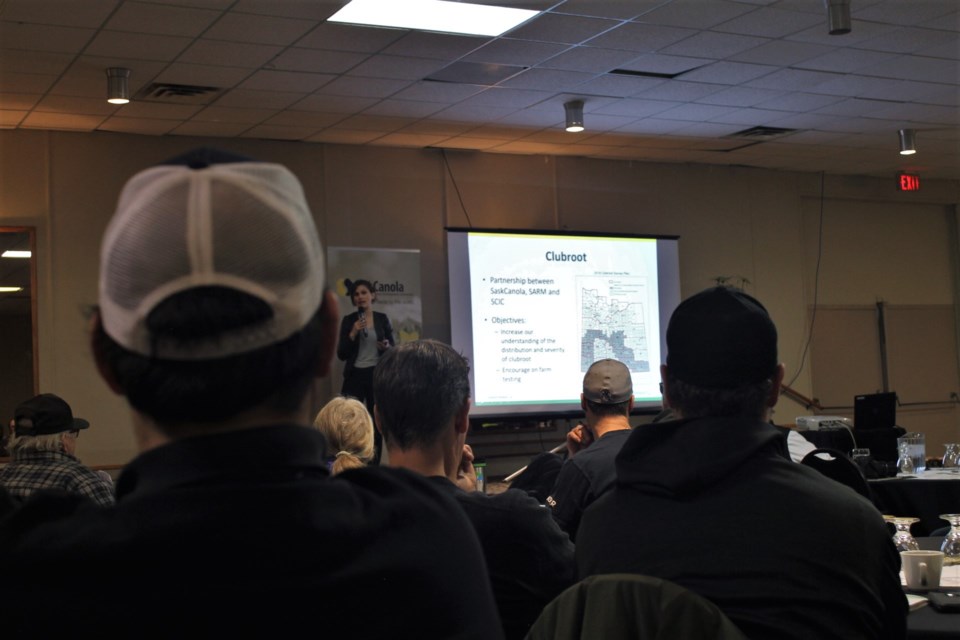Barb Ziesman, a provincial plant disease specialist with Saskatchewan Agriculture, presented some key knowledge on soil-borne diseases like clubroot, verticillium, and root rot at a recent Top Notch Farming conference hosted by SaskCanola in Moose Jaw.
Ziesman began with an update on clubroot and verticillium, both diseases that commonly affect canola, and advised producers to be aware of both root diseases.
Clubroot is no stranger to canola producers, and Ziesman noted that SaskAg surveys of the clubroot pathogen found a higher prevalence of the disease in the southern part of the province this year.
Verticillium is a fairly new concern here in Saskatchewan, and with no fungicides currently registered to address it, producers will have to be on the lookout for symptoms of the pathogen-based disease.
Both clubroot and verticillium affect the roots of the plant, impacting their ability to retain moisture and causing potentially serious yield loss.
Symptoms of verticillium are best seen about two weeks after swathing, said Ziesman. Producers should be peeling back the outer layer of the plant’s stalk and looking for black, spotted discolourations — similar to blackleg or sclerotinia, but more dispersed.
The pathogens that cause verticillium and clubroot are both soil-based, which means they can be easily spread between fields and can survive for a number of years in the soil without showing symptoms.
Ziesman recommends producers concerned about clubroot and verticillium stripe begin adopting biosecurity tactics to lessen the chance of the pathogens spreading.
This includes things like knocking the dirt off of equipment before leaving a field, visiting known infected fields last while working, creating a separate entrance and exit onto fields, and avoid working in wet conditions because it moves more soil.
In addition to biosecurity, Ziesman recommended implementing a crop rotation of at least two years — up to four years for verticillium — between canola to keep pathogen levels low and to consider using pathogen-resistant varieties as early as possible.
Ziesman also spoke about the concern of root rot in peas and lentils this year, especially since 58 per cent of lentils and 53 per cent of peas suffered in 2019.
The wet-to-dry-to-wet weather over the last decade is likely why root rot has seen a rise recently, as wet conditions tend to stress out peas and lentils, making them more susceptible to root rot pathogens. Stress from herbicide and insect damage can also leave pulses susceptible to disease.
Ziesman encouraged pulse producers to choose drier fields with good drainage for pulse production, and implement a six to eight year rotation of pulse crops with resistant host crops like chickpeas, faba beans or soybeans in between.
There are fungicides registered for the different causes of root rot, as well as seed treatments and resistant varieties available, but Ziesman noted that resistance may be breaking down.
Ziesman encouraged producers to be scouting fields for signs of any of these diseases and to consider registering for SaskAg’s 2020 survey program, which will be gathering data from a wide distribution of land to better understand the spread of crop disease.




